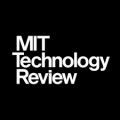
Fission is the grandfather of carbon-free energy, powering 300,000 US homes in the 1950s when photovoltaics were still just lab experiments. Decades of growth were followed by decades of decline, as accidents, waste, and the sheer expense of building nuclear reactors made them commercially and politically toxic.
In 2002, researchers at Oregon State University saw a path to take existing light-water reactors and shrink them by 99%, creating much simpler reactors that would rely on passive cooling—ensuring the reactor’s safety even without external water or power. Five years later, they founded NuScale to commercialize the technology. Their first full-scale reactor, a six-pack of NuScale’s power modules generating nearly 500 megawatts (enough to power around 250,000 average US homes), now looks to be just around the corner.





